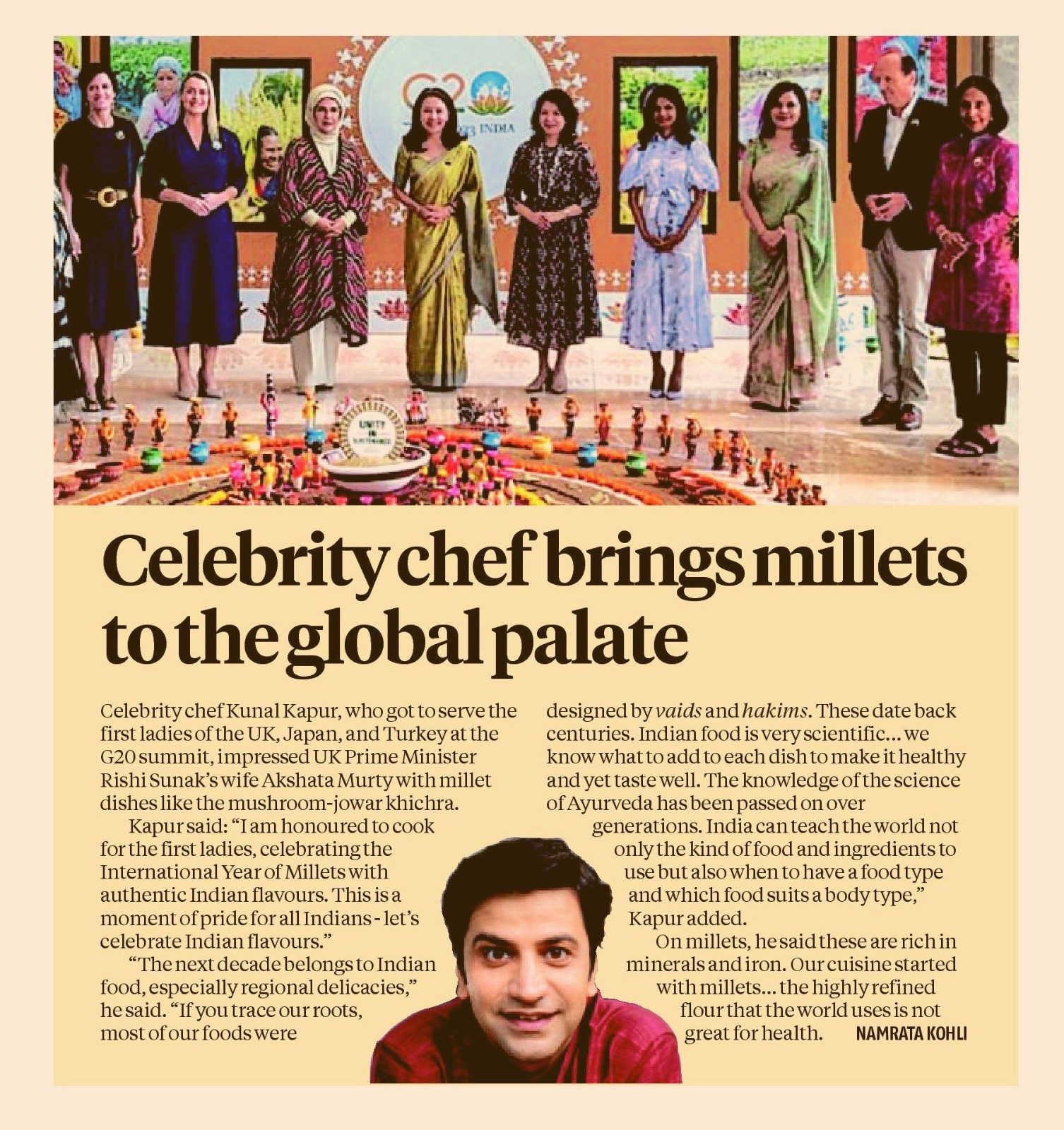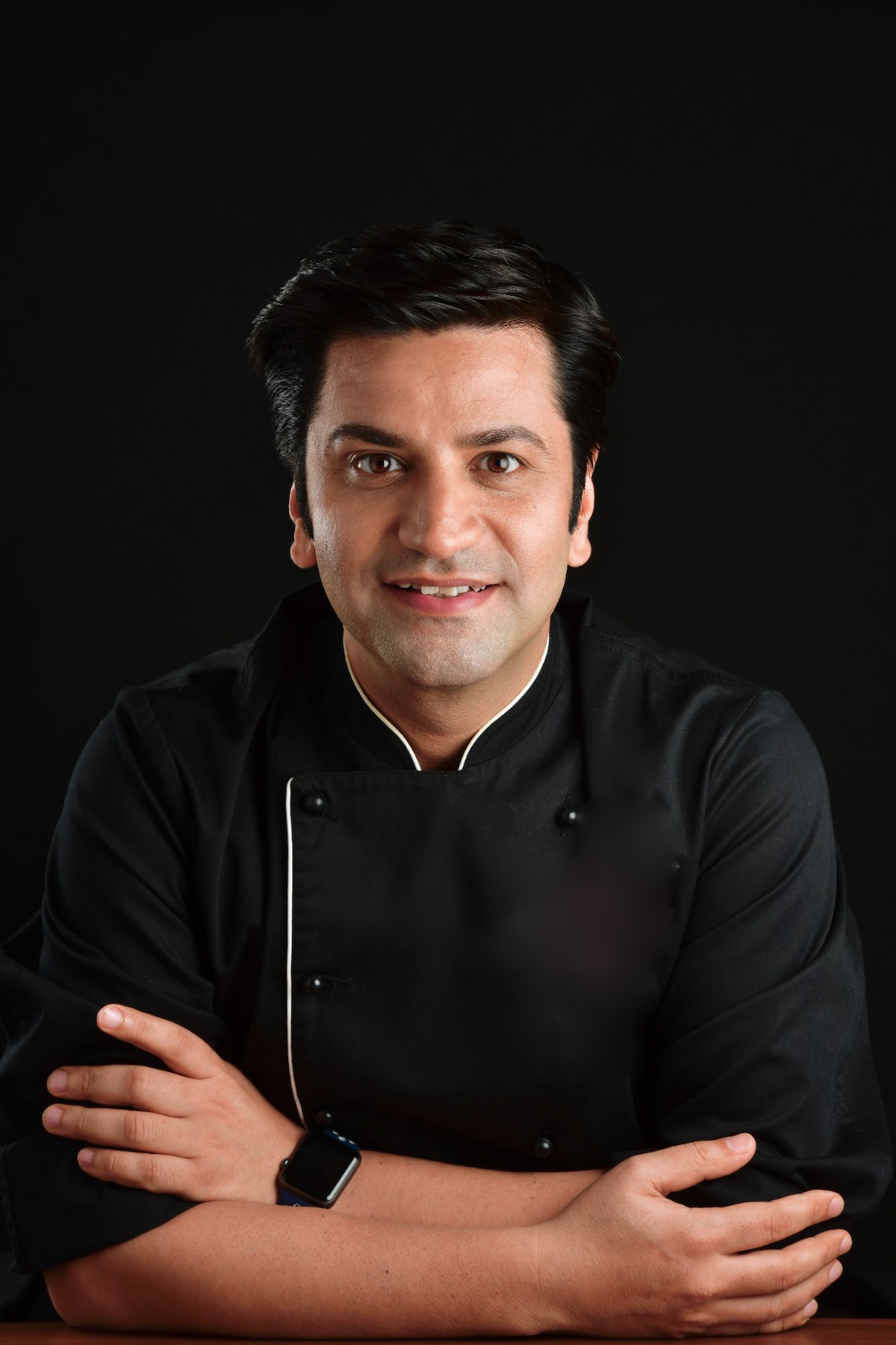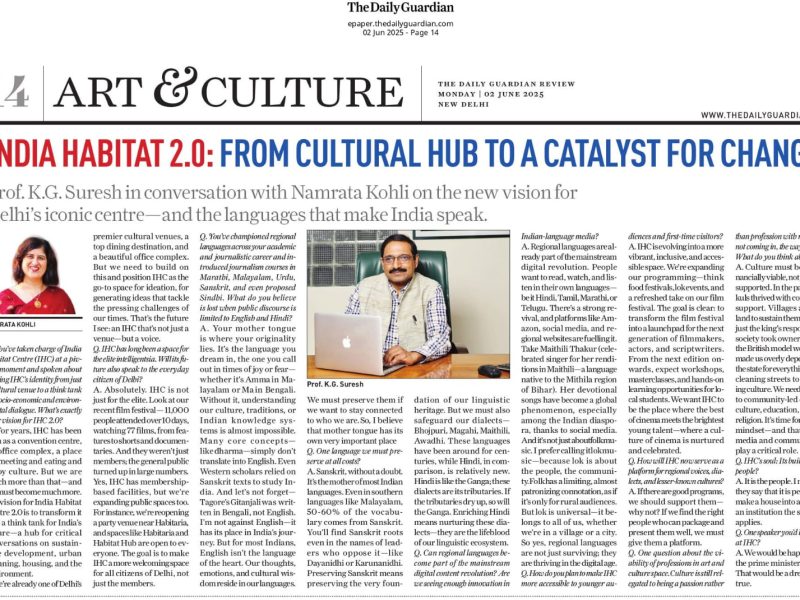Even the simplest of Indian food ‘bursts with flavours’, says the celebrity chef
Celebrity chef Kunal Kapur says cooking for the First Ladies of the UK, Japan and Turkey at the G20 summit last weekend was an honour.
Kapur, who recently launched a restaurant chain called The Quarter Plate in Delhi NCR, draws inspiration from the streets of India and regional food. “I think I enjoy cooking Indian food. There is far more power to the chef when you cook your own food,” he told Namrata Kohli in an interview in Delhi.
What can India teach the world and how can we add value to the global palate?
If you trace our roots, food has been medicine and most of our food was designed by vaids and hakims of that era. These formulations date back to centuries and centuries. Indian food is very scientific. We may not have in-depth knowledge about each dish but we intrinsically know what to add to each dish to make it tasty yet healthy such, as while making rajma we add hing to counter the gas-producing effect of rajma or we add jeera to besan in kadhi or imli ka pani to sambhar etc. Our dadi or nani always said don’t take lassi and curd for dinner as it can lead to joint pains. The knowledge of the science of ayurveda has been passed on through word of mouth from generation to generation.
India can teach the world not only what kind of food and ingredients to have, but also when to have and which food suits your body type. Food is a lot about timing and your last meal should be before sunset.
India can teach the world about sustainability. Like from leftover rice, we make curd rice, lemon rice. Like that a lot of our food is served on patta: kele ka patta or mallu ka patta in Uttarakhand. Talk about karhi, nobody can say when it started but most probably it started from Rajasthan, when instead of throwing away excess buttermilk it was decided to thicken it up and add some spices. In Rajasthan, the original karhi had no besan but makki ka atta. It used to be a simple humble dish in which we added tarka and made it a delicacy.
ALSO READ: G20 Summit: Celebrity chef Kunal Kapur brings millets to the global palate
India can teach the world about better cereals like millets as well as slow cooking. This is also the year of millets which are rich in minerals, iron. All our cuisine started with millets but the world uses highly refined flour which is not great for health. Whereas the American food is cooked on fast fire, Indian food is mostly slow cooking. By the way, the pressure cooker was not an Indian invention, it was a German invention.
The word ‘quarter’ hints at small portions and not big servings. Why did you name your restaurant such?
With Quarter Plate, we’re here to showcase the beauty of simplicity through our unique take on Indian tapas. It’s all about marrying the vibrant soul of Indian cuisine with the friendly, sharing vibe of small-plate dining. A serendipitous encounter with a small, old-fashioned plate shop is what ignited the spark for Quarter Plate. Predominantly our menu has a lot of tapas: From khichdi to chaat to south Indian to Bengali food to pav bhaji sliders, we have tried to be playful and do fun things with regional food. The portions are small because we want you to sample more of our food. In India, every state has its own specialties and we want you to try these regional dishes.
Why do you think Indian food will find favour abroad?
Indian cuisine is very diverse. For a long time, the world and the chefs have very loosely termed Indian food as Punjabi food which has got popular outside of India. But there is so much more. People at large and those in the culinary business are themselves discovering that there is so much more beyond what they have done with their restaurants and that’s why you see the rise of traditional Indian food. Suddenly, you have local Indian food coming on to restaurants either as it is or in a fusion avatar. Champaran meat is a very typical Bihari dish, but it has become popular in Delhi NCR and everyone from top restaurants to humble dhabas are doing it.
Which dishes have become acceptable to the global audience?
I think there are certain classics. For instance, the Mango lassi may not be that big in India but it is huge in the US and even in the Middle East. In summers when you do an Indian restaurant, one of your top beverage movers is mango lassi. It’s a no-brainer. Similarly, something like a biryani has become super popular with the global audience. South East Asia does rice, so also Middle East and Latin America and Caribbean countries. But if you compare the rice we do in India, there is punch packed into the rice dish. Even the simple pulao is bursting with so much flavour.
Any food trivia or food history and tracing origins of a particular dish that comes to your mind?
It’s very interesting that sources describe where curry started and how it started. The word curry is an English word which possibly was coined by the British when they were in the south of India, the current Chennai region where the local cooks would grill meat and cook it. Tamil mutton is called kaari: They (the British) would ask for kaari, which later got translated to curry. The word ‘curry’ before that hasn’t been found. We never had chicken curry. Curry is also an easy word for a British, or a non-Indian, and they add it to everything e.g. mutton curry, aloo ki curry, prawn curry. Traditionally, we would call it anything but curry. We had other names such as aloo matar ki subzi or chicken ka murgh musallam or korma, mutton rogan josh or champaran or rarha. So, these are too many terms without curry which shows it wasn’t an Indian term.





